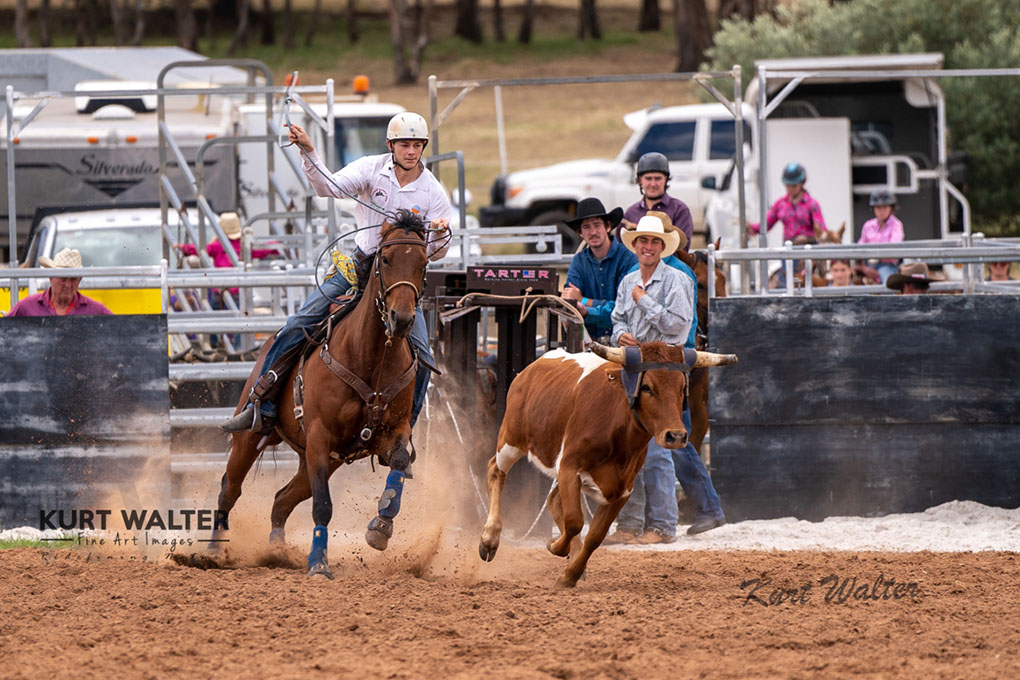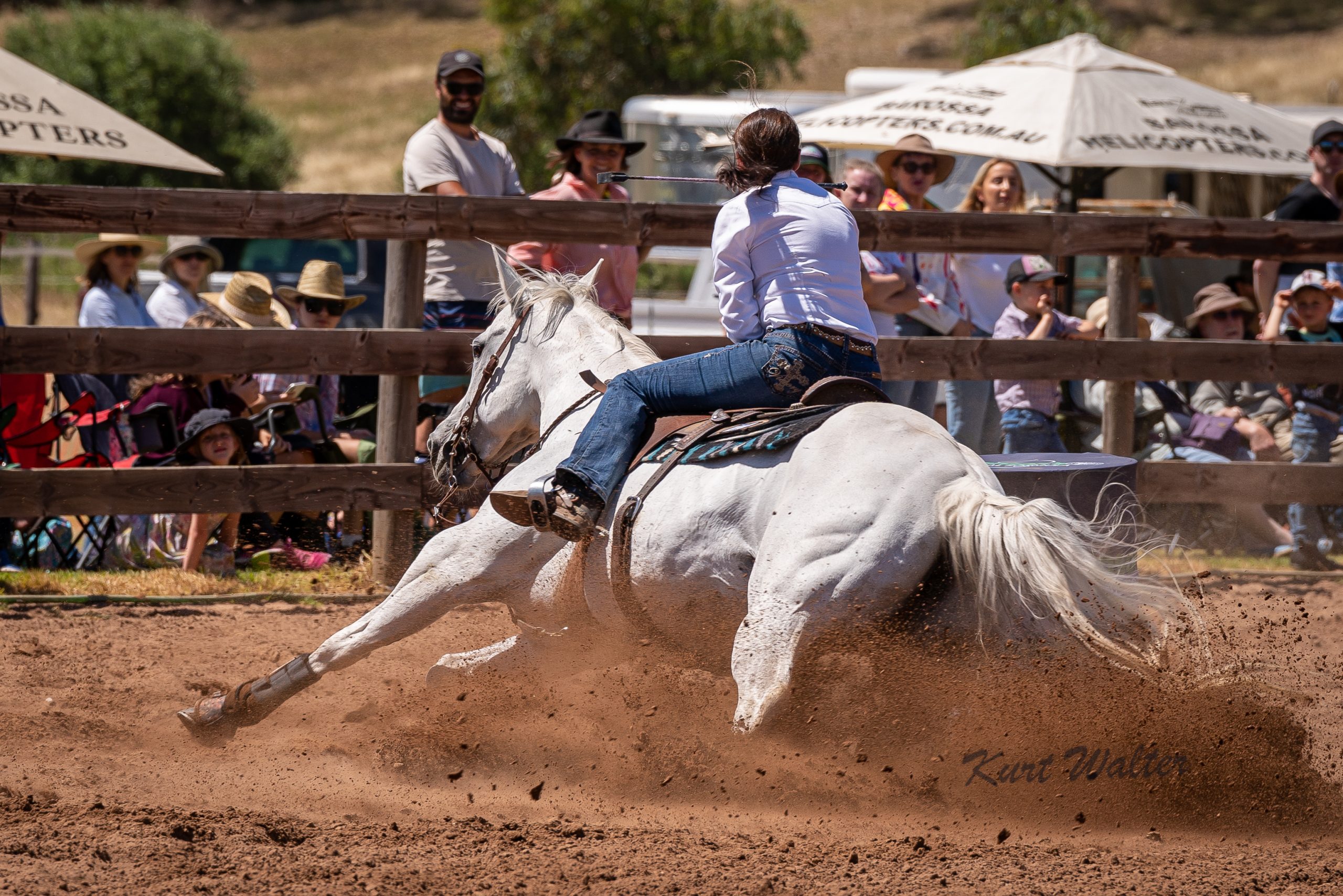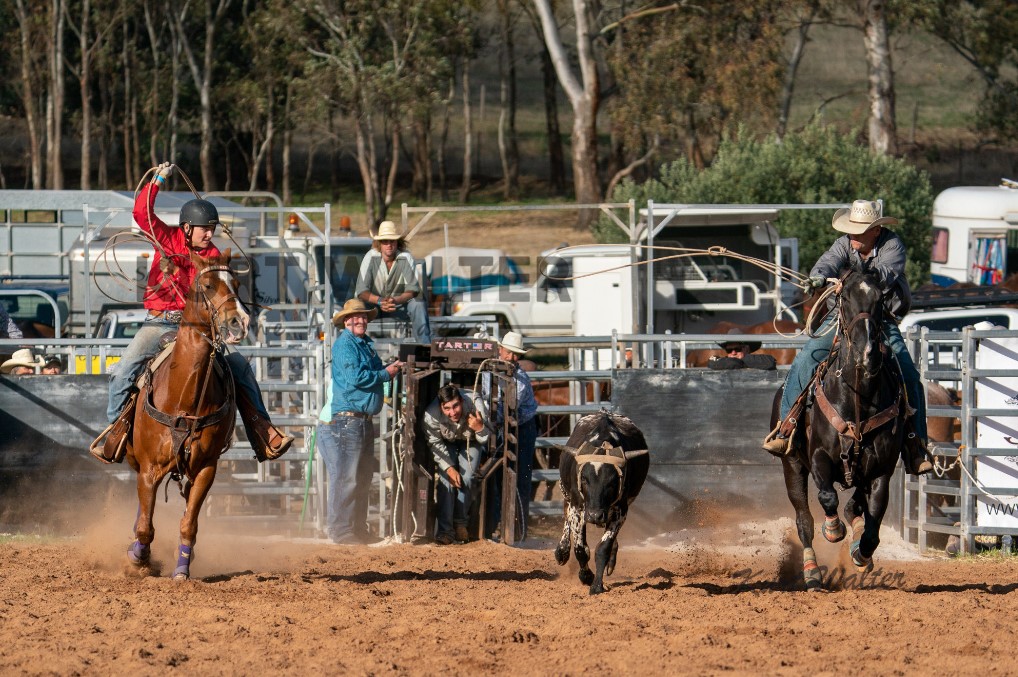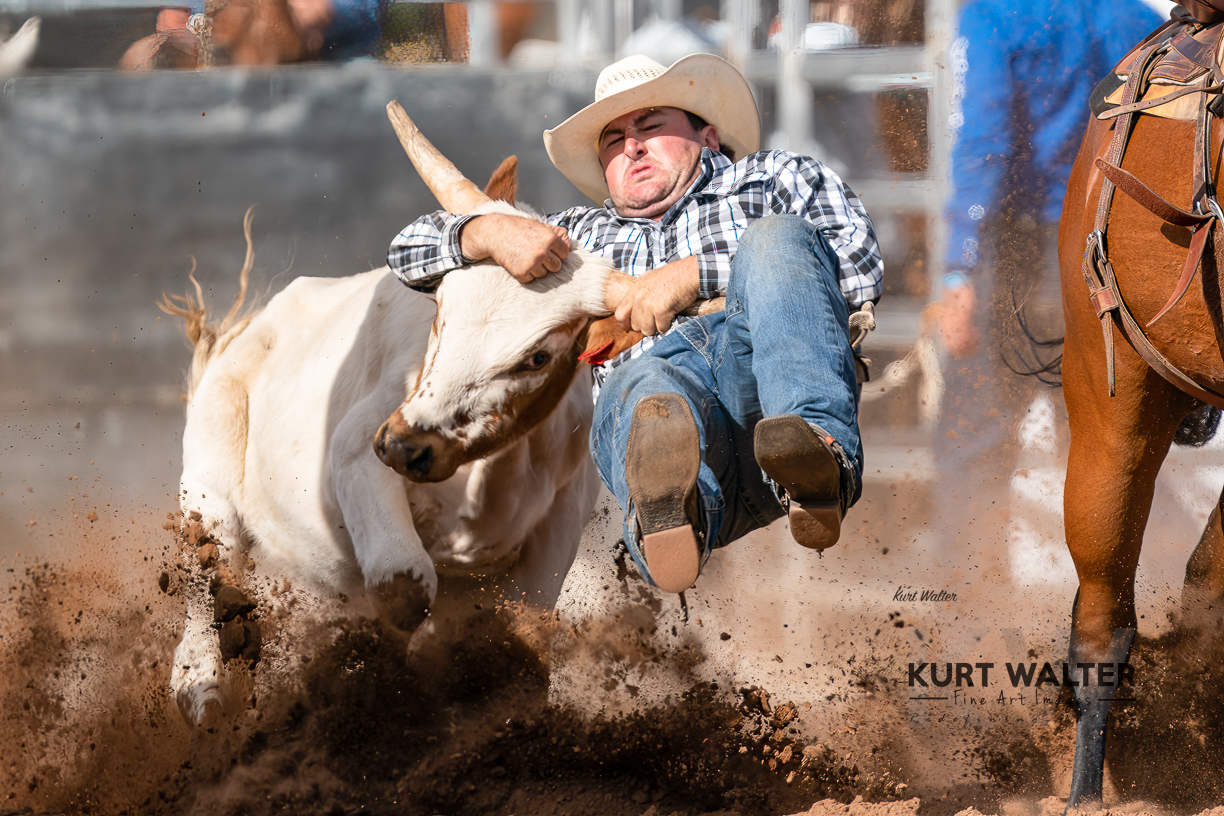WHAT RODEO EVENTS HAPPEN ON THE DAY?

OPEN & JUNIOR BREAKAWAY ROPING
Here’s the short version: a person ropes a calf around the neck while on horseback. The rope “breaks” away from where it’s tied to the saddle when the calf reaches a certain distance.
In the junior competition girls and boys can compete, in the Open Breakaway Roping, it is a ladies only event.
Here’s the rest of the story: the calf begins in a roping chute. The roper is in a box on the heeler’s side (right side) of the roping chute. Once the roper positions their horse in the corner facing straight ahead and gives the nod, the calf is released. Most times, the calf has a small rope around its neck. This rope is connected to the barrier that the roper and their horse cannot cross until the calf has a head start. The connecting rope breaks when the calf reaches the right distance, and the roping can begin!
The goal is to throw a bell collar catch around the calf’s neck. Immediately upon snagging the calf, the roper’s horse slams on the brakes, cinching the rope taut. When this happens, the string that ties the rope to the saddlehorn breaks and this signals the end of the run. When the string breaks, the clock stops.

OPEN & JUNIOR BARREL RACE
Barrel Racing: Speed, Precision, and Pure Adrenaline!
Barrel racing is a high-speed, heart-pounding rodeo event that puts both horse and rider to the ultimate test! Originally created as a women’s event, it’s believed to have first gained traction in Texas. In 1948, a determined group of Texan women founded the Women’s Professional Rodeo Association (WPRA) to carve out a space for female athletes in the rodeo world.
Fast forward to today, and barrel racing is a must-watch event at rodeos worldwide! In Australia, it’s an electrifying competition where anyone—on any horse—can take on the challenge, no matter their experience level in junior or grass roots competitions. However at Rodeo’s the open barrel race is a ladies event.
The goal? Pure speed and precision! Riders navigate a set cloverleaf pattern around three barrels as fast as possible. The clock is unforgiving, measured down to the millisecond by an electric eye. Success hinges on the perfect blend of horsepower, athleticism, and strategy—a well-trained horse, a skilled rider, and solid ground conditions can make all the difference!
The official barrel racing pattern follows strict distances for fairness and consistency:
🏇 90 feet (27m) between the first and second barrels
🏇 105 feet (32m) from the first to the third, and second to third
🏇 60 feet (18m) from barrels 1 and 2 to the start line
With dust flying, hooves thundering, and crowds cheering, barrel racing is a breathtaking display of skill, courage, and raw speed.

OPEN & JUNIOR TEAM ROPING
Team roping in the US traces back to 1521, with the arrival of the Spanish conquistadors, who brought Andalusian cattle to Florida. Long after they left, the cattle stayed with the settlers, who built ranches and transported their cattle across the country. In the 1800s, day workers on the ranches had to safely catch cattle and restrain them, to treat illness, brand, or tag them.
Necessary skills evolved into an exciting, adrenaline-filled team sport.
Team roping is a rodeo event that involves timing and teamwork between two skilled ropers and their horses. The two ropers are called headers and heelers.
Each cowboy or cowgirl begins the event in their own box. The steer is given a head start across the arena. Once the steer reaches the barrier limit the header is permitted to follow it. The header ropes the steer’s horns and then wraps the end of the rope around the saddle horn several times. This is known as a dally. The dally restricts the steer’s movement and turns it towards the left. This turn enables the heeler to access the steer’s hind legs.
The heeler rides behind the steer and ropes the hind legs together with a “heel” loop. The heel loop is designed to easily come apart after the steer has been roped and released.
Once the steer is roped by the header and heeler both horses step backward to remove slack in the line. Both horses and respective cowboys face each other at the finish.

STEER WRESTLING
The origins of steer wrestling or “bulldogging” date back to Ancient Greece in bull-fighting events known as taurokathápsia, where bull fighters on horseback would chase a bull and jump on it, grasping its horns before wrestling it to the ground.
The rodeo event originated in the 1890s, and is claimed to have been started by an individual named Bill Pickett, a wild-west show performer said to have caught a runaway steer by wrestling it to the ground
Steer Wrestling, also known as bulldogging, is a rodeo event that demonstrates strength and teamwork between a bulldogger and a hazer and their horses. The objective of steer wrestling is to wrestle, a steer to the ground as quickly as possible. This may sound easy, but wrestling a steer is no simple task. Not only does a cowboy have to grab a steer at 30 miles per hour successfully, they then have to wrestle this steer, which weighs more than double their own weight, down to the ground.
Similar to team roping and tie-down roping, two contestants enter a box with a chute in between them. Both the contestant who will wrestle the steer, known as a “bulldogger,” and his partner, the “hazer,” will start on both sides of the chute on horseback. With the steer loaded in the chute, a breakaway rope barrier is attached to the steer to make sure the steer is given a head start. As the steer runs out of the chute.
As the hazer and bulldogger run after the steer, both cowboys work together to guide the steer closer to the steer wrestler so he’s able to reach down. When the cowboy reaches the steer, he slides down off of his horse and hooks his right arm around the steer’s right horn, grasping the left horn with his left hand. While holding onto the steer, the cowboy digs his feet into the dirt to slow the steer down while using his strength and leverage to wrestle it to the ground. His work isn’t done, nor does the clock stop, until the steer is on its side and all four feet are pointing in the same direction.
